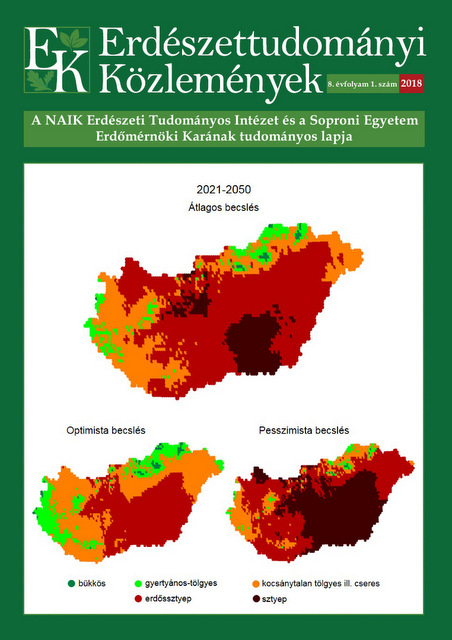Studies on factors influencing forest gap vegetation with special attention to the microclimate
Gergely Zagyvai, Attila Eredics, Ágnes Csiszár, Márton Korda, Attila Lengyel, Viktor Tiborcz & Dénes Bartha
Correspondence
Correspondence: Zagyvai Gergely
Postal address: H-9400 Sopron, Bajcsy-Zsilinszky u. 4.
e-mail: zagyvai.gergely[at]uni-sopron.hu
Abstract
Based on data from 12 microclimate measurement networks placed in different gaps of various forest stands in Hungary, linear correlation was found between the gap size and certain daily meteorological parameters. The comparison of the forest and gap data to the nearest state meteorological observatory also revealed systematic differences. These provide opportunity to estimate certain climatic parameters, e.g. daily maxima or minima in various sized gaps and the surrounding forest stand, based on standard meteorological observations. Relationship between attributes of 109 gaps and species diversity were analysed as well as indication of microclimatic gradient by regrowth species. Effect of gap age and size are different by social behaviour type. The shape of gaps affects the species richness of regrowth. Positive correlation was detected between Forest Aridity Index and diversity variables. The total number of species, individuals and effective numbers of regrowth species are highest in the centre of the gaps. Shady, moist areas of gaps are indicated by regrowth of typical mesophilous tree species.
Keywords: artificial gap, microclimate, ecological gradient, regrowth, plant diversity
Open Acces
For non-commercial purposes, let others distribute and copy the article, and include in a collective work, as long as they cite the author(s) and the journal, and provided they do not alter or modify the article.
Cite this article as:
Zagyvai, G., Eredics, A., Csiszár, Á., Korda, M., Lengyel, A., Tiborcz, V. & Bartha, D. (2018): Studies on factors influencing forest gap vegetation with special attention to the microclimate. Bulletin of Forestry Science, 8(1): 197-210. (in Hungarian) DOI: 10.17164/EK.2018.012
Volume 8, Issue 1
Pages: 197-210
First published:
31 May 2018
Related content
7
More articles
by this authors
6
Related content in the Bulletin of Forestry Science*
More articles by this authors in the Bulletin of Forestry Science
* Automatically generated recommendations based on the occurrence of keywords given by authors in the titles and abstracts of other articles. For more detailed search please use the manual search.
